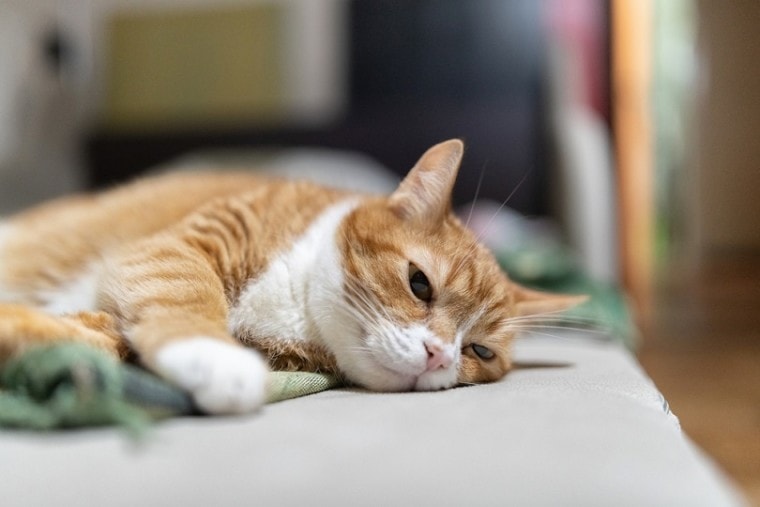
It breaks your heart every time you see one of your cats get sick. What’s worse is when the illness is contagious and soon all your fur babies are sneezing with runny noses. Should you isolate a sick cat? It isn’t always necessary to isolate the ill cat for every possible illness, but that isn’t the case with an upper respiratory infection (URI).
A feline URI is like a cold for humans. URIs become more common in cats that are around lots of other cats, and improper treatment could be potentially fatal. In some cases, URIs turn into pneumonia. The smartest way to avoid these life-threatening circumstances is to keep a sick cat isolated until they are no longer contagious to the other cats in the house.
What Causes Upper Respiratory Infections in Felines?
A feline URI is typically caused by one or more bacterial or viral agents in the body. Many agents could cause the infection, but the most common virus that causes a URI is the feline herpesvirus type-1. This virus is also sometimes called feline viral rhinotracheitis. The most common bacteria that causes a URI is bordetella. These two agents are responsible for over 90% of all URIs in cats.
What Are the Signs of an Upper Respiratory Infection?
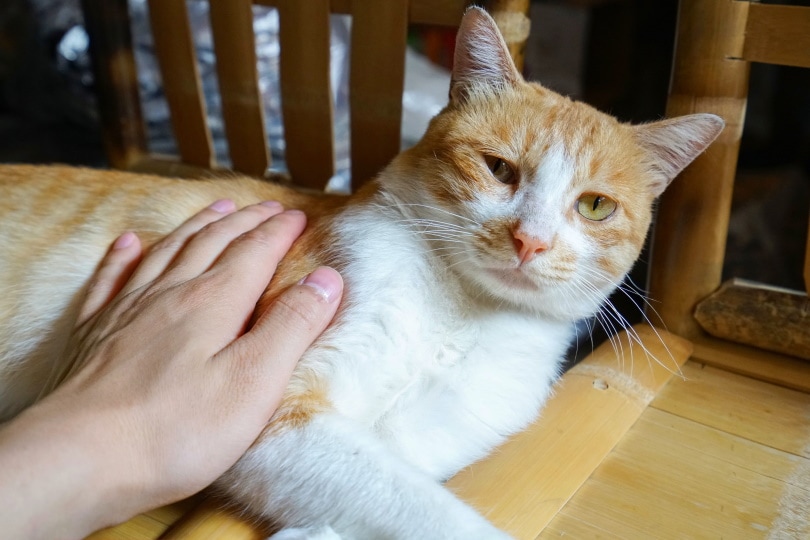
URIs are similar to a human cold. A lot of the signs of a URI are found in the nose and throat area. Sick cats might experience sneezing, congestion, runny nose, red eyes, sores on the mouth, fever, lethargy, and lack of appetite.
Discharge coming from the nose and eyes may be clear or cloudy in appearance. The more severe the illness gets, the more difficulty the cat has breathing. In general, most of the symptoms of a URI last 7 to 10 days long.
How Do Cats Get Upper Respiratory Infections?
Both the viruses and bacteria that lead to a URI are highly contagious between cats. Infected cats shed particles through their saliva or from eye secretions. Cats either get infected by being in direct contact with an infected cat, or they can get it by environmental exposure from objects that an infected cat has interacted with. These objects could be water bowls, toys, bedding, and litter boxes.
Thankfully, both the virus and bacteria do not survive for long periods while in the environment. They can be easily destroyed with proper disinfectants and other household cleaners. They typically last less than 18 hours outside of the host’s body.
When to Take Your Sick Cat to the Veterinarian
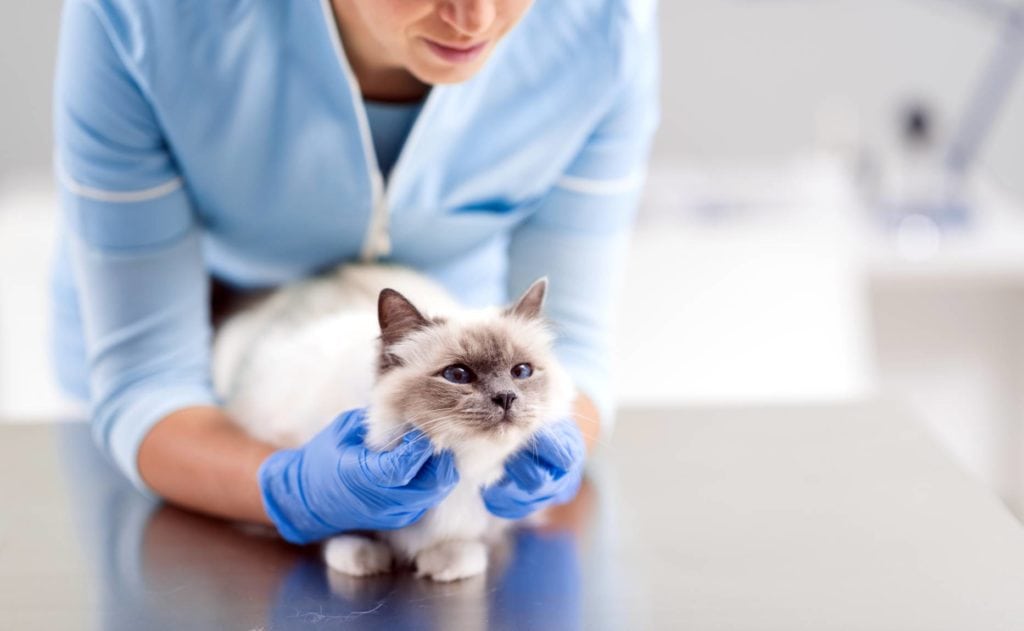
Keep in mind that cats who are around a lot of other cats are the ones who are most likely to get a URI. If you adopted a cat from a shelter, make sure to take them in for an examination regardless of whether they have any symptoms or not.
Rest and proper care are crucial for getting your kitty back to normal. Many cats recover within a couple of weeks. Still, it’s hard to know the right time to take them to the vet. Here are some URI signs that your cat needs to see a professional:
How Long Do Upper Respiratory Infections Last?
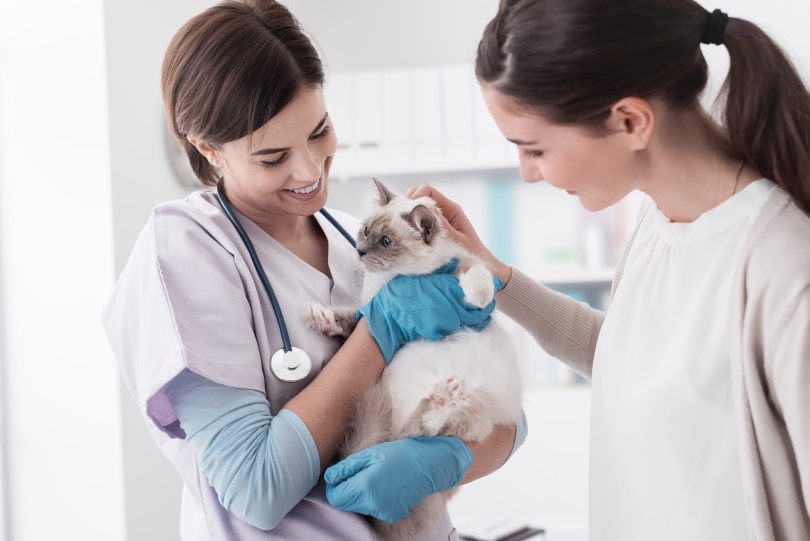
Cats go through an incubation period lasting 2 to 10 days once exposed to an infectious agent. Most infections last about 7 to 21 days, but 7 to 10 days is the average. Cats are contagious during this entire time.
Cats with the herpes virus are a bit different. Some cats are chronic carriers and essentially carry the disease for life. Stress usually triggers the agent to become reactivated, but others don’t have signs ever again. Many herpesvirus carriers are free from signs but are still a risk to other cats.
How Upper Respiratory Infections Are Diagnosed and Treated
Veterinarians usually collect samples of cells from your cat’s eyes, nose, or throat to identify the agent causing the illness. Sometimes, additional tests like X-rays and blood tests are required.
Cats with uncomplicated URIs are treated at home with prescription antibacterial medication. They may also advise you to take them to a steamy bathroom for 10 minutes a day or give you eye drops. If your cat is dehydrated, they may have to be hospitalized until their fluids go up.
How Long to Isolate a Sick Cat?
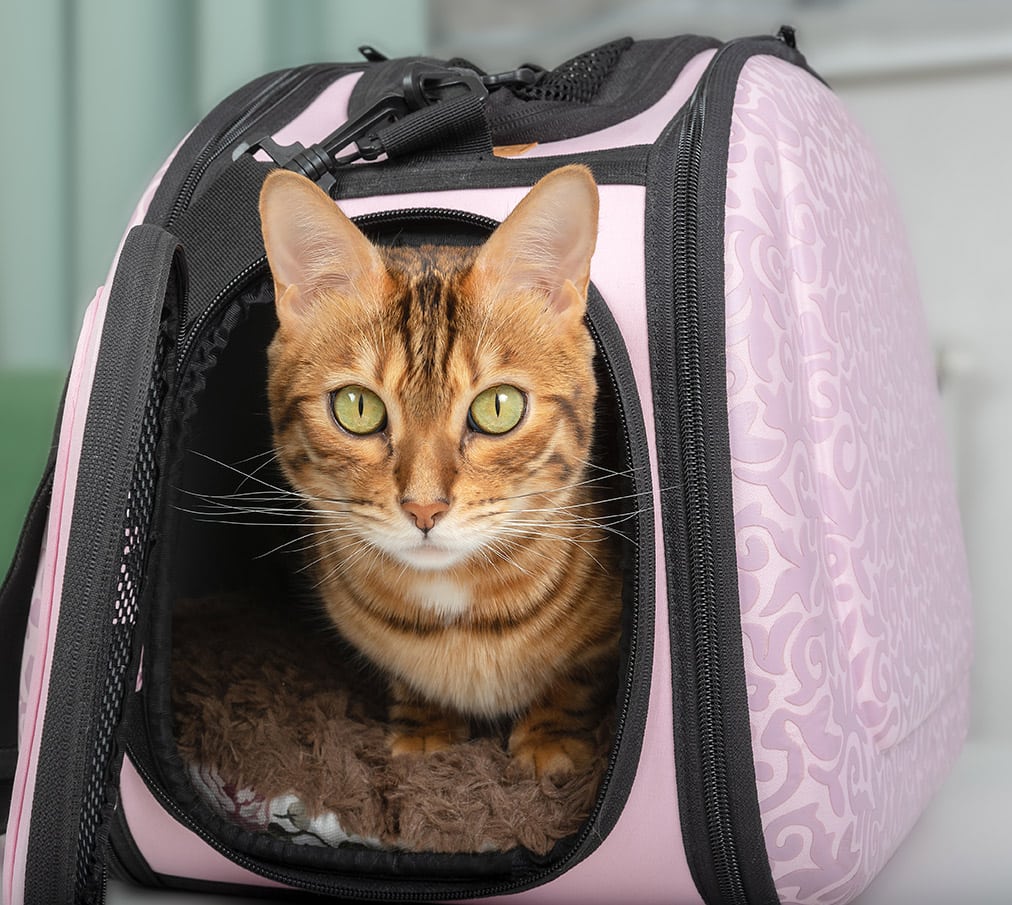
Keep cats diagnosed with a URI in isolation during their incubation period, or around 3 weeks after they start developing signs. Most cats are vaccinated against URIs, but young, unvaccinated kittens are most susceptible. If your cat has gotten a URI from the herpes virus, make sure all other cats in the household are vaccinated before allowing them to interact with each other again.
Final Thoughts
Illness is a sad but common issue that all living creatures face. While most URIs aren’t serious, you’ll still want to keep a close eye on your fur babies and monitor their behavior. The last thing any pet owner wants is a house full of sick animals. It’s usually safer to isolate a sick cat, but make sure to take them to the vet to ensure that they have a URI and no other severe diseases.
- Next on your reading list: Can Cats Catch Colds? Symptoms, Causes, and Care
Featured Image Credit: shymar27, Shutterstock





